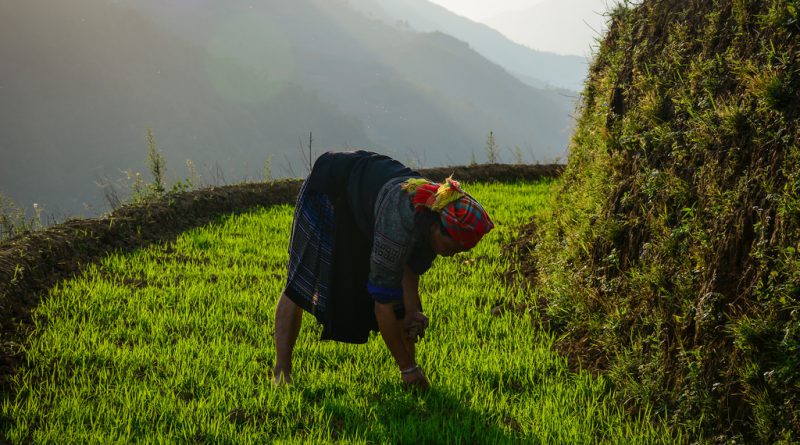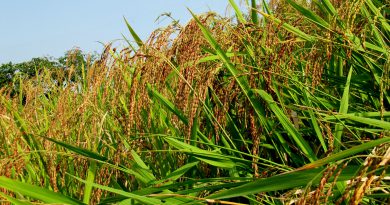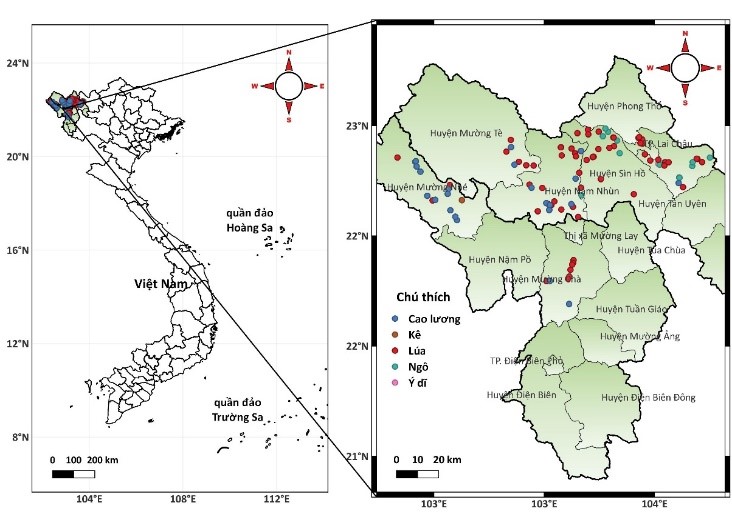Diversity of glutelin seed storage protein forms from local rice cultivars in North Vietnam
HOAI. T. T., A. NISHI and H. SATOH
(In Rice Genetics Newsletter Vol. 24 (pages: 59-62), A Publication of Rice Genetics Cooperative Genentic Resources Section National Institute of Genetics Mishima, Japan.).
Glutelins are one of the major storage proteins in rice, constituting up to 75% of grain protein. The acidic-alkali soluble glutelin consists of an acidic subunit with molecular mass of 40kDa and a basic subunit with molecular mass of 20kDa (Kagawa et al. 1988). Some previous studies reported a wide variation of glutelin storage protein forms in local rice germplasm (Jahan et al. 2005, Aung et al. 2003). This paper deals with the variation and the characterization of glutelin polypeptides from local rice germplasm in North Vietnam.
A total of one hundred and eighty five Vietnam rice cultivars collected from mountainous areas of North Vietnam, were used in this study. Kinmaze and IR36 were the control varieties. Glutelins were extracted with 1% lactic acid and analysed by horizontal slab gel isoelectric focusing (IEF). The variation of IEF band pattern for glutelin basic subunit in Vietnam local rice cultivars is showed in Figure1A and Table 1. In cultivars Kinmaze and IR36, twelves type of IEF bands were detected.
**; New band that was not found in Kinmaze and IR36
In IR36, pI 8.37 and 8.45 bands were present while pI 8.13 and 8.24 bands were absent. In constract, in Kinmaze, pI 8.13 and 8.24 bands were present, while pI 8.37 and 8.45 bands were absent. Fifteen IEF bands with iso-electric (pI) points ranging from 8.13 to 8.86 were observed among 185 rice cultivars. Among them, three new bands were detected, namely pI 8.35, pI 8.40 and pI 8.47. In adition to the presence of new bands, a wide variation of staining intensity of polypeptides was exhibited through four levels including absent, present, low and high, which were found in ten IEF bands, namely 8.13, 8.15, 8.24, 8.24, 8.35, 8.40, 8.42, 8.48, 8.50, 8.78 and 8.86. Thus, by IEF analysis, Northern Vietnam local rice cultivars showed a high diversity of glutelin basic subunit.
Fig. 1B and Table 2 show variation of IEF bands for glutelin acidic subunit from Northern Vietnam local rice cultivars. Fourteen IEF bands were observed in both Kinmaze and IR36 with significant differences in staining intensity of polypeptides. Sixteen IEF bands were identified for glutelin acidic subunit polypeptides in Vietnam rice with iso-electric(pI)points ranging from pI 6.30 to pI 7.52. In addition to the 14 bands found in Kinmaze and IR36, two new bands with pI 7.17 and pI 7.40 were observed. Besides the presence of new bands, the significant difference in staining intensity of polypetides was also found in 14 IEF bands. Among them, nine IEF bands, (pI 6.30, 6.50, 6.55, 6.59, 6.62, 6.80, 6.90 and 6.98), showed the highest variation through four levels of staining intensity of polypetides including absent, present, low and high. Band types typical to both Kinmaze and IR36 were found among Vietnam local rice cultivars. However, both IR36 and Kinmaze IEF band-type combinations were recorded in larger number of cultivars. Glutelin seed storage proteins from Northern Vietnam local rice cultivars exhibited the high diversity of both glutelin acidic subunit and basic subunit through IEF analysis. This study may provide useful information for improving the nutritional rice grain quality program.
References
Aung P. P., T. Kumamaru and H. Satoh, 2003. Diversity of glutelin basic subunit among Myanmar local rice cultivars. RGN 20: 36-39.
Jahan M. S., T. Kumamaru and H. Satoh, 2001. Variation of glutelin seed storage protein in Bangladet rice cultivars. RGN 18: 43-45.
Kagawa H., H. Hirano and F. Kikuchi, 1998. Variation of glutelin seed storage protein in rice (Oryza sativa L.) Jpn. J. Bred. 38:327-332
Satoh H., Y. J. Uemura, T. C. Katayama, S. T. Minakuchi, T. Kumamaru and M. Ogata, 2000. Genetic diversity of endosperm storage nutrient in rice. Intergration of Biodiversity and Genome Technology for Crop Improvement International workshops proceeding. Pp:89-92.



